Review of the Development of
Two-Phase Screw Expanders
By
I. K. Smith
City University London
1. SYNOPSISRecognition of the advantages of efficient two-phase expanders started from efforts to improve energy storage in steam plant. More recently twin screw machines were investigated as a means of power recovery from the expansion of wet geothermal brines. More general consideration of power recovery from hot liquid streams and how to reduce energy dissipation in throttle valves led to studies on twin screw machines to expand wet fluids other than water. These led to a clearer understanding of how to design them with high adiabatic efficiencies.
2. INTRODUCTION
The need for two-phase expansion as a work producing process has been recognised for quite a long period. An early example of this was a proposal by Ruths [1] who filed a patent in 1920 to increase the energy storage capacity of steam accumulators. At that time, steam accumulators were widely used in the process steam industries to balance out load fluctuations and thereby minimise the size of boiler required. At periods of low load, excess steam was absorbed in a pressure vessel to heat cooled water up to its boiling point. At high loads, the main steam line pressure dropped and additional steam then came from the accumulator from which it flashed off due to the drop in line pressure. The steam drawn off created relatively small level changes in the storage vessel and the bulk of the stored fluid remained in it as water close to its boiling point. Ruths aimed to use the whole of the stored fluid in the accumulator by circulating it in a closed circuit through a two-phase expander to produce power on an intermittent basis as shown in Fig 1. The type of expander was not considered in great detail and alternative designs were shown using either a reciprocating machine or axial flow turbine for this purpose. The author found no record of such a two-phase expansion system being used and, apart from limitations due to the intermittent nature of the device, it is
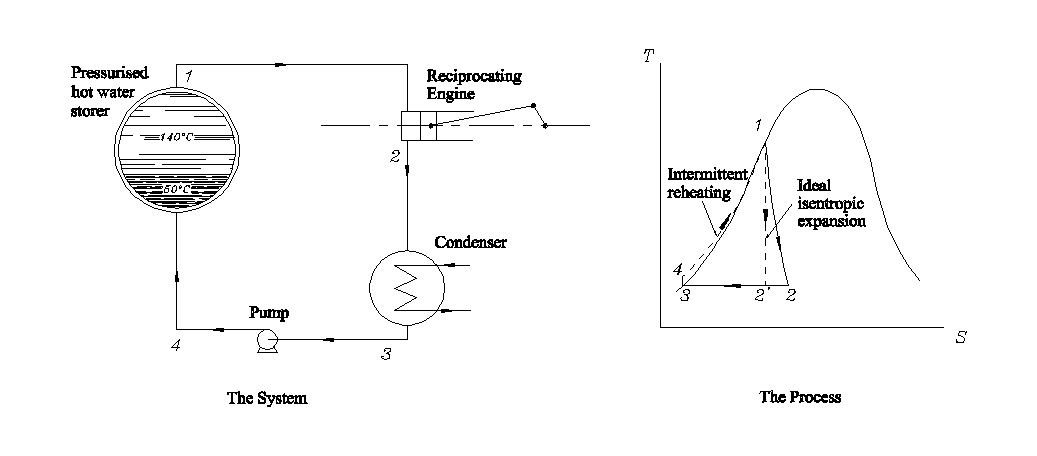
Fig. 1 Ruths’ proposal for enhanced energy recovery from a steam accumulator.doubtful if satisfactory efficiencies would have been possible from such machines at that time.
The thermodynamic process described by such a cycle is also shown on temperature-entropy coordinates.
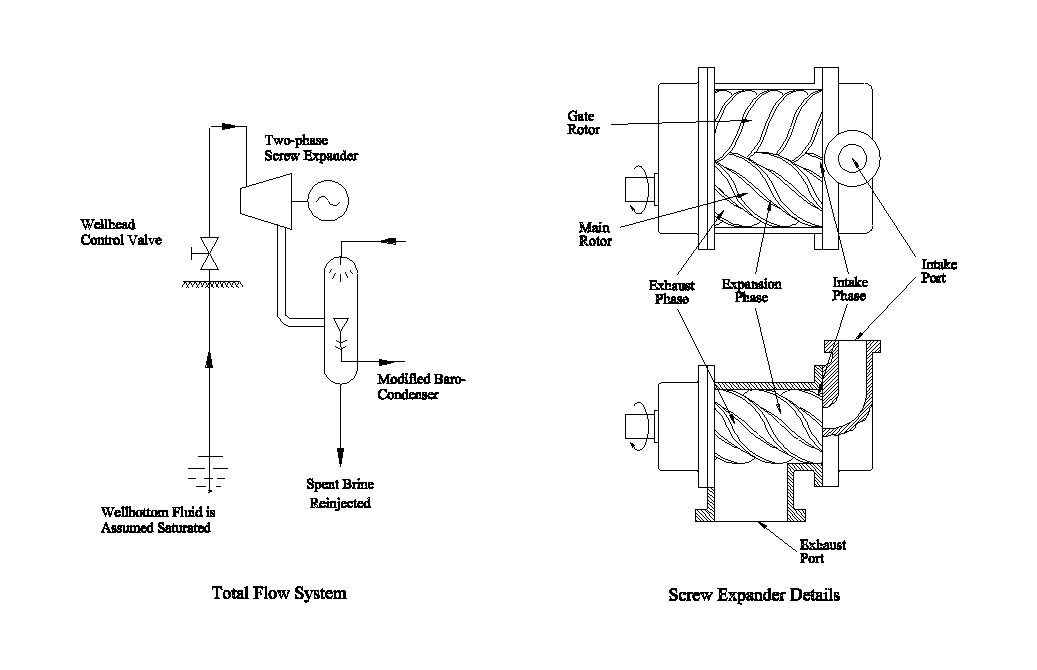
In the early nineteen seventies, interest in using geothermal steam for generating electrical power grew rapidly in the United States where it was found that dry steam drawn from the California geysers could be used to produce base load electricity for an economically viable price. It was soon recognised that nearly ninety percent of geothermal resources were either wet steam or water dominated and that the flashing process required to derive dry steam from them resulted in a huge loss in power recovery potential. Fig. 2 Sprankle’s original proposal for the ‘total flow’ of wet steam through a twin screw expander
In 1973, Sprankle [2] was granted a patent for the use of a twin screw machine to expand wet steam or even pressurised hot water as a means of recovering power from liquid or low dryness fraction geothermal brines. This process is shown in Fig 2 and, as may be observed, it is thermodynamically equivalent to Ruths’ energy recovery concept with direct contact heating of the water in the geothermal reservoir. The temporary crisis in oil supplies at that time gave an enormous incentive to the investigation of this and alternative modes of expanding two-phase fluids in what was termed the "total flow" process. Much of the early work on this and references to it are described by Kestin [3]. In parallel with the work on twin screw machines which stemmed from this, other investigations were carried out on axial flow turbines [4-5], biphase turbines [6-7] and more recently on two-phase reaction turbines of the Hero type [8-9] in which to expand water steam mixtures more efficiently.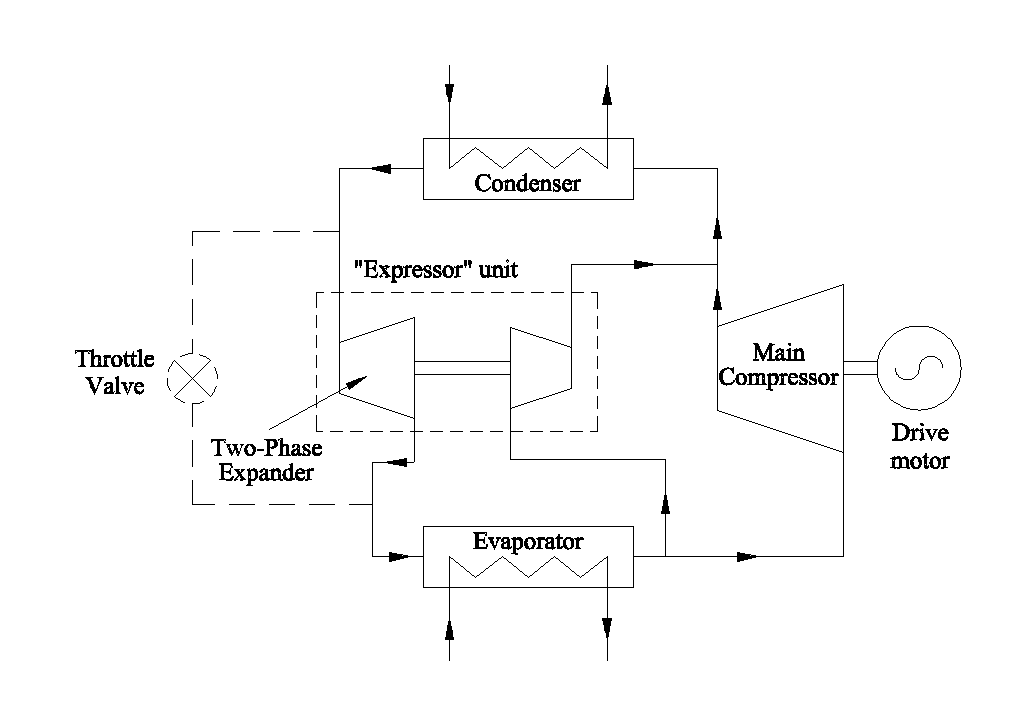
Fig. 3 Throttle valve replacement in a vapour compression system
Apart from geothermal power applications, it was also recognised that throttling processes in chemical process plant and in lar
ge vapour compression plant used for air conditioning and heat pump units could be made more efficient by power recovery from them using radial inflow turbines, as shown by Swearingen [10] and by screw expanders, as shown by the author [11] in Fig. 3.Practical demonstrations of these proposals were all characterised by relatively poor expansion efficiencies. The highest values quoted were for radial inflow turbines where adiabatic efficiencies of 67% were given while the efficiencies of total flow screw expanders hardly exceeded 50%.
Major problems associated with the expansion of water are the huge volume flow rates and volume ratios required from machines when expanding to normal condensing temperatures, as shown by the author [12]. One attempt to overcome this was to use a screw expander in parallel with a turbine as proposed by Fukuda [13] and shown in Fig 4. By this means, steam is progressively drawn from the screw expander and expanded in a turbine so that the vapour content of the screw expander never becomes too high. There is no record of whether this was more efficient than a screw expander operating alone but it
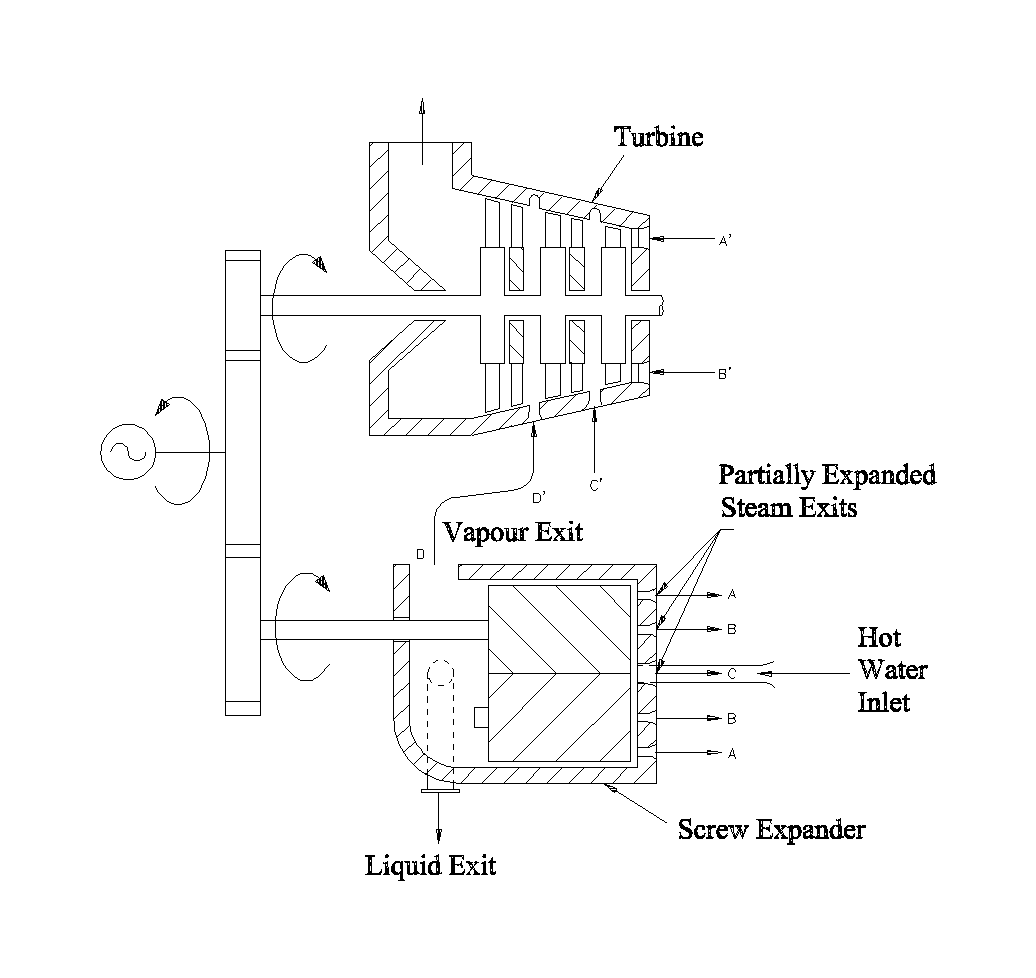
Fig. 4 Fukuda’s proposal for high volume ratio expansion
would clearly be of some advantage in limiting the size of the screw machine required to obtain power outputs in the megawatt range.
1. DETAILED STUDIES OF TWO-PHASE SCREW EXPANDERS
The early work on total flow screw expanders was mainly directed to the building and testing of small machines which operated on water or water/steam mixtures as described by Steidel et al [14]. This was followed by a further paper by Steidel and other authors [15] who sought to extend their results by empirical curve fitting. House [16] performed some basic performance estimates assuming expansion efficiencies of 70% and attempted to evaluate power output by splitting the expansion process into impulse and volumetric components. Margolis [17] analysed screw expanders as turbines to operate on high temperature dry steam. He assumed symmetric rotors and his analytical method included allowance for leakage and dynamic effects. Dunbar [18] attempted to predict the expansion process from a more fundamental physical model in order to allow for the effects of change in built in volume ratio. In addition, a number of other publications were made describing experimental work carried out mainly at the Lawrence Livermore and Jet Propulsion laboratories in the USA The most recent of semi-empirical studies was by Ng et al [19] in 1989.
Taniguchi et al [20] investigated engine driven heat pumps for district heating systems in which steam raised in a fuel fired boiler was expanded in a dry screw expander which, in turn drove a screw compressor in a heat pump cycle. The throttle valve in the heat pump system was replaced by a small screw expander which augmented the main steam expander drive to the compressor. The power output of the two-phase screw expander was rather less anticipated and the work was followed by a detailed analytical and experimental study of two-phase screw expanders using R12 as the working fluid [21]. The method of analysis used was identical to that developed for screw compressor performance prediction and is based on the assumption of the non steady flow energy equation applied to the volume of fluid trapped between the rotors and the casing and quasi steady one dimensional flow assumptions for the fluid flow through all ports and leakage passages. The performance predictions appeared to coincide well with the measured values on a small scale unit with rotors of 81 mm diameter. These led to predictions of internal adiabatic efficiencies approaching 80% in larger machines which would be reduced by bearing and timing gear friction losses. An important feature of their study was the consideration of the effects of delay time in the formation of bubbles at the onset of pure liquid expansion. The predictions with this effect included showed only minor differences from those assuming zero delay time, while the test results confirmed that the assumption of zero delay time in bubble formation was a valid one.
Work on two-phase expanders was begun independently by the author in 1981, after being consulted on how to maximise power recovery from pressurised geothermally heated water, the generation of which was then being considered in South West England from a process known as "Hot Dry Rock". The idea was to drill two deep bores into Cornish granite, which has a temperature gradient of approximately 40oC/km depth. Cracks would be stimulated between them at a depth of 5 km by injection of cold water down one bore at high pressure which would then return up the other at a temperature of approximately 200oC.
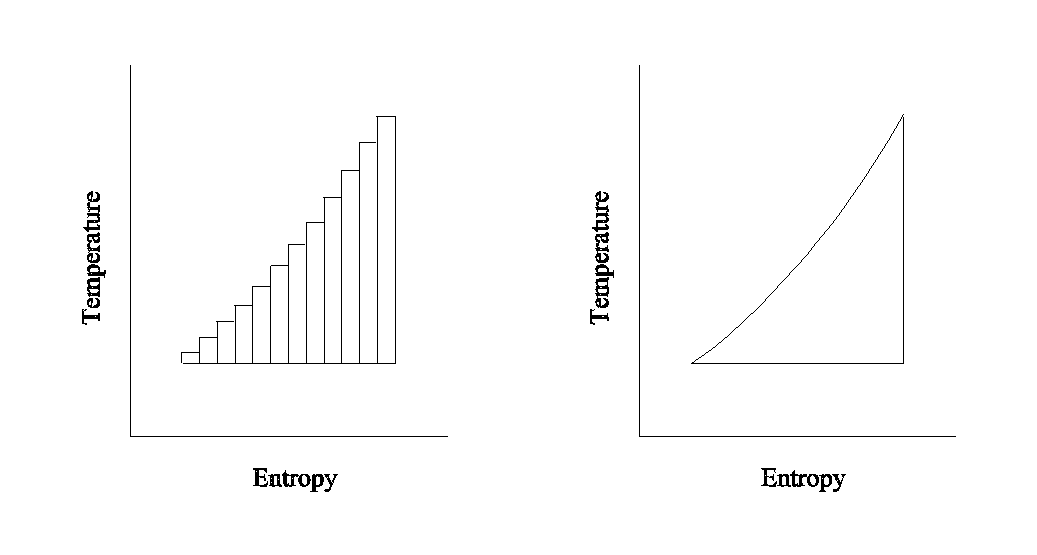
Fig. 5 The ideal cycle for power recovery from a finite heat source
Theoretically such a heat source would produce maximum power output from a succession of small Carnot cycles which could be viewed collectively as an ideal trilateral cycle as shown in Fig 5. Allowing for temperature differences between the heat source and heat sink associated with such a cycle, a more achievable practical demonstration of the ideal would be as shown in Fig 6. This could be closely approximated by the arrangement shown in Fig 7 which, as can be seen, is an indirectly heated version of the total flow system. It was an appreciation of the volumetric problems of using the injected water itself as a working fluid which led to the proposal of such a more complex arrangement, despite the additional cost of the primary fluid heater. The author described this as a Trilateral Flash Cycle (TFC) system.
Since the primary heater would be large, due to the small mean temperature difference between the heating medium and the working fluid, such a system would only be cost competitive with a more conventional Rankine cycle system if the two-phase expander required for it were to have an adiabatic efficiency close to that of a dry vapour turbine i.e. approaching 80% based on the shaft output. It was decided from the outset that the most likely device to achieve this value would be a twin screw machine.
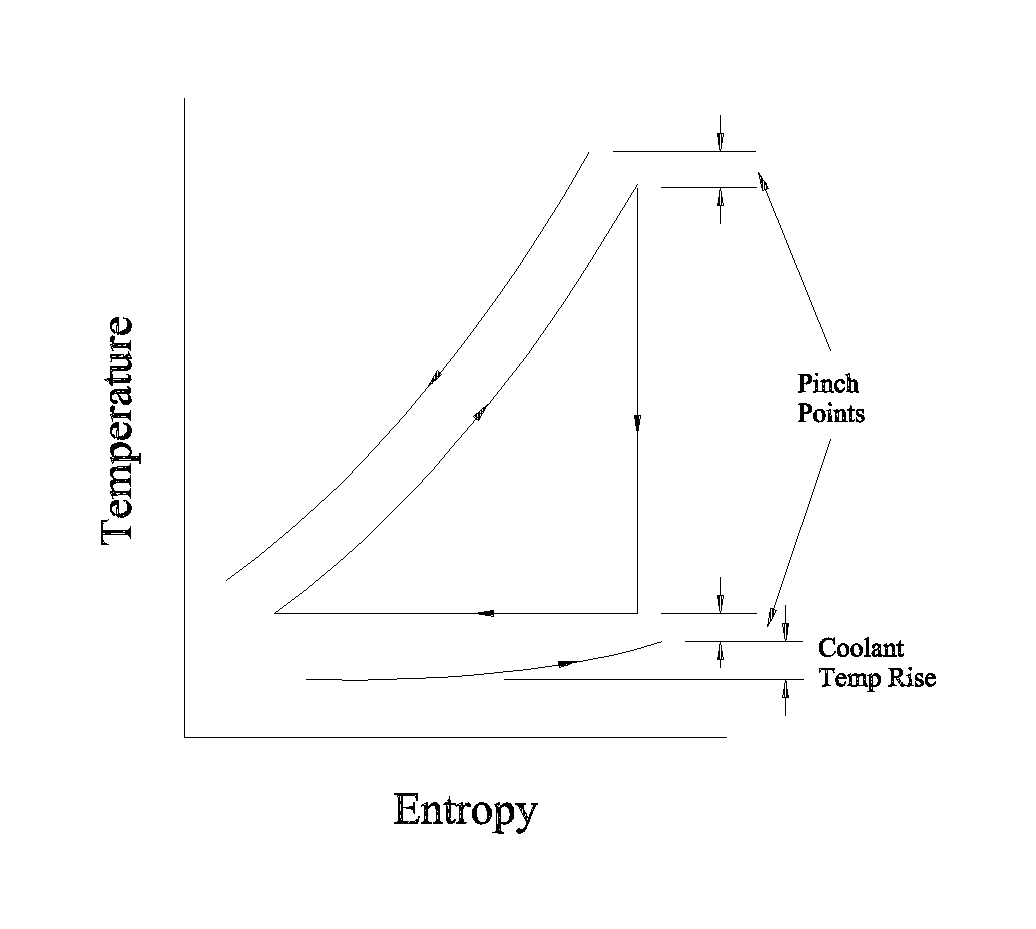
Fig. 6 The ideal trilateral cycle with a finite rate of external heat exchange A lengthy development programme followed from this idea, the main features of which are described in refs [12] and [22-23]. This began with a detailed study of possible alternative working fluids to water which showed that by the use of light hydrocarbons, it was possible to reduce the exit volume flow rate by at least 10:1 and the volumetric expansion ratio by more than 30:1. Five builds of screw expander were tested with differing rotor L/D ratios, rotor size, rotor profile and built in volume ratio. Early tests resulted in maximum measured adiabatic efficiencies of over 70% but speed and volume ratio changes produced unexpected decreases in this value. An analytical model similar to that of Taniguchi et al was then developed in an effort to understand the reasons for these changes.
The main discovery of the analysis was that the overall expansion ratio achieved in the machine was significantly larger than the built in value determined by the rotor and port geometry and that the extent of the expansion was dependent on the expander tip speed. The reason for this, is that due to the high density of the two-phase mixture, fluid acceleration at the inlet, associated with the filling process in the expander, is responsible for a large pressure drop. Due to the rotor motion, the gain in fluid kinetic energy associated with this is not dissipated. The filling process is therefore the non-steady flow equivalent of a turbine nozzle in steady flow. This result was confirmed by experiment [23].
On this basis screw expanders can be designed to achieve a large expansion ratio with a built in volume ratio of the order of only 3:1 per stage [24]. This permits high mass flow rates in relatively small machines and hence implies that leakage losses are relatively small. It follows that with correct design, adiabatic efficiencies of the order of 70-75% are possible in small machines rising to about 80% in large machines provided that suitable working fluids such as refrigerants and light hydrocarbons are used.
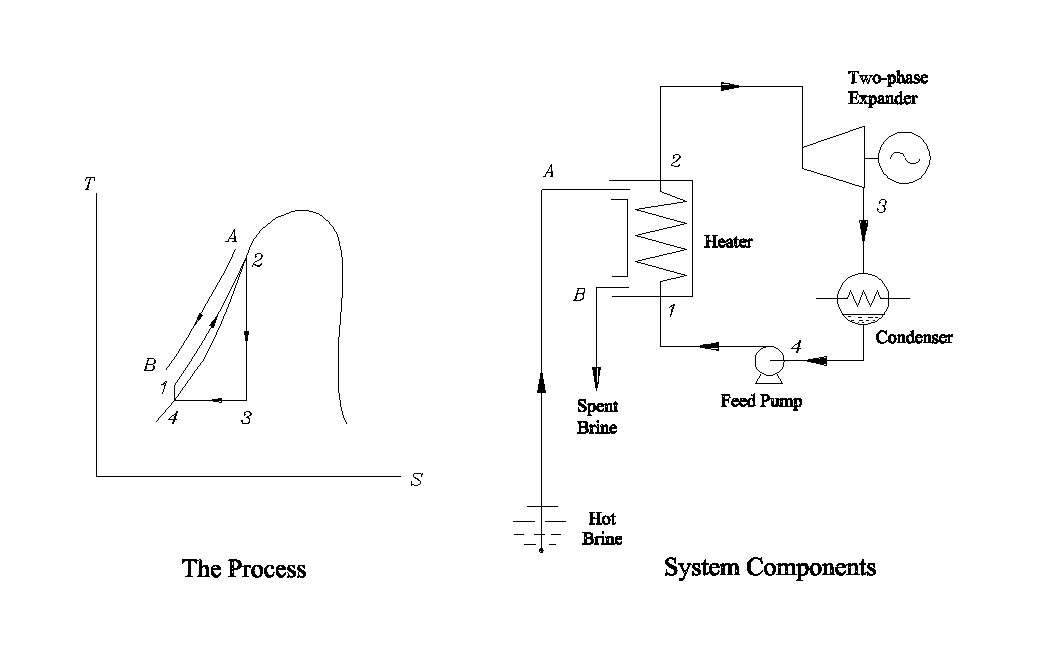
Fig. 7 The trilateral flash cycle system. When water is used as the working fluid, equivalent built in volume ratios led to gross under expansion and hence a poor adiabatic efficiency. Raising the built in volume ratio then leads to the need for excessively large machines and much higher internal leakage losses. This was the reason for the poor results obtained with screw expanders operating with water.
4. IMPROVEMENTS IN MECHANICAL DESIGN
In all the experimental work on two-phase screw expanders so far reported, a major problem was leakage of working fluid into the bearings and contamination of the working fluid by the lubricating oil. In the case of process gas compressors, this can only be overcome by the installation of double mechanical seals between the working chamber and the bearings. Even with elaborate and costly systems such as these, successful internal sealing is still regarded as a problem by established process gas compressor manufacturers.
A further problem associated with such machines was the need to include timing gear in the design to avoid rotor contact since two-phase expansion requires the working fluid to be essentially free of oil if vapour-liquid equilibrium is to be maintained during the flash expansion process.
Both the above problems led to the need for relatively large and complex machines and expander cost estimates based on equivalent process gas compressor prices showed that two-phase screw expanders are not cost effective either in full scale TFC systems or in relatively small scale applications such as throttle valve replacements.
Two recent developments have led to great simplification in two-phase screw expander mechanical design.
Firstly, mathematical studies of rotor profiling based on gear tooth generation theory [25-28] have led to the development of a new family of rotor profiles here at City University. These offer many advantages over more traditional shapes but from the viewpoint of the expander design, the most significant are the low rotor contact stresses between the male and female rotors and almost pure rolling motion along the contact band between them. These features were confirmed by first testing such rotors in an air compressor designed for oil injection which ran for 150 hours with the rotors lubricated by water only [29]. No rotor surface damage could be detected in post test inspection. The same type of rotors have since been included in an experimental screw expander [30] which has been built and run successfully without timing gear, relying only on the liquid component of the working fluid to act as both a lubricant and coolant. This machine achieved adiabatic efficiencies in excess of 75 % at power outputs of only 10-15 kW even when expanding subcooled liquid. However, for fluid admission in this phase, analytical predictions of mass flow rate need further development.
In the same experimental expander, advantage was taken of advances in bearing design [31] to fit rolling element bearings for both radial and axial loads which used either ceramic or ceramic coated rolling balls and rollers. By this means, it was possible to lubricate the bearings with the cooled liquid component of the working fluid only and dispense with both the oil lubrication system and the expensive internal sealing system. This procedure also proved to be successful. The only seal then required is an external seal at the drive shaft exit for which purpose standard refrigerator compressor shaft seals are wholly adequate.
The present state of the art is therefore that twin screw machines can be designed and built to run successfully as two-phase expanders without timing gear, internal seals or a separate oil lubrication system with adiabatic efficiencies in excess of 70%.
These advances, based on extensive analytical and experimental work make it possible to produce twin screw two-phase expanders at a price which would enable them to compete on a price per kW basis with dry vapour turbines.
5. CONCLUSIONS
Nearly thirty years after twin screw machines were first proposed as an efficient means of expanding two-phase fluids, the bulk of the technical and cost problems associated with commercial development of such devices appears to have been solved. There still exist areas of uncertainty in some aspects of their performance estimation based on computer simulations, but efficiency predictions based on such models appear to be substantially confirmed. The early proposals to use such machines for cost effective power recovery from water dominated geothermal resources by direct expansion appear to be unfounded but there are fair economic prospects for their use as process expanders in chemical, large air conditioning, heat pump and refrigeration plant as well as in closed cycle systems for the recovery of power from low grade heat sources.
6. REFERENCES
Ruths, J. Method and means of discharging heat storage chambers containing hot liquid used in steam power and heating plants UK Pat. 217,952,1924. Sprankle, R.S. Electrical power generating systems. US Pat. 3,751,673, August 1973. Kestin, J. Sourcebook on the production of electricity from geothermal energy DOE/RA/2830-2, August 1982. Elliott, D.G. Theory and tests of two-phase turbines. Publication 81-105, Jet Propulsion Laboratory, May 1982. Comfort, W. The design and evaluation of a two-phase turbine for low quality steam-water mixtures. UCRL 52281, Lawrence Livermore Laboratory, May 1977. Studhalter, W.R. Rotary separator turbine enhances geothermal power recovery. Modern Power Systems, September 1982, pp. 61-66. Cerini, D. J, Diddle, C. P, and Gonser, W. C. Project development, Desert Peak 9 MW power plant. Proceedings of Eighth Annual Geothermal Resources Council, Reno, Nev, 1984. Fabris, G. Two-Phase reaction turbine US Pat 5,236,349, August 1993. Fabris, G, Dhillon, J.S and Wortman, A. Two-phase Hero turbine with curved no separation nozzles; Energy related invention recommendation No 591, NIST, USA Dept of Commerce, 1993. Swearingen, J. S. Flashing fluid runs turboexander. Oil and Gas J, 5 July 1976, 74(27), 70-71. Smith, I. K. and Stosic, N. R. The Expressor: An efficiency boost to vapour compression systems by power recovery from the throttling process. AES-vol.34, Heat pump and refrigeration systems design, Analysis and applications, ASME 1995, pp. 173-181. Smith, I. K. Development of the trilateral flash cycle system. Part 1: fundamental considerations. Proc Instn Mech Engrs, Part A, 1993, 207(A3), 179-194. Fukuda, S. Hot water prime mover. Japanese Pat. 134,139, 22 November 1978. Steidel, R. F, Weiss, H and Flower, J. E. Characteristics of the Lysholm engine as tested for geothermal applications in the Imperial Valley. J. Engng for Power, January 1982, 104, 231-240. Steidel, R. F, Pankow, D. H and Brown, K. A. The empirical modelling of a Lysholm screw expander. Proceedings of Eighteenth Intersociety Energy Conversion Conference, 1983, pp. 286-293. House, P. A. Helical-rotor expander applications for geothermal energy conversion. LLL Report UCRL-52043, April 1976. Margolis, D. L. Analytical modelling of helical screw turbines for performance prediction. Trans ASME, J. Engng for Power, v100, July 1976, pp 482-487. Dunbar, M. K. Altering the volumetric expansion ratio of a Lysholm helical screw expander. Report No: US DOE/ET/27252-T3,1984. Ng, K. C, Lim, T.B and Bong, T. Y. Analysis of screw-expander performance. . Proc Instn Mech Engrs, Part E, Jrnl of Proc Mech Eng, 1989, 203(A3), 15-20. Taniguchi, H, Giedt, W. H, Kudo, K, Kasahara, K, Ohta, J and Kawamura, K. Energy-conserving heat pump-boiler systems for district heating. Proceedings of Eighteenth Intersociety Energy Conversion Conference, 1983, v4, pp. 1862-1868. Taniguchi, H, Kudo, K, Giedt, W. H, Park, I and Kumazawa, S. Analytical and experimental investigation of two-phase flow screw expanders for power generation. Trans ASME, J. Engng for Gas Turbines and Power, 1988, 110. Smith, I. K. and Pitanga Marques da Silva, R. Development of the trilateral flash cycle system. Part 2: increasing power output with working fluid mixtures. Proc Instn Mech Engrs, Part A, 1994, 208(A2), 135-144. Smith, I. K. Stosic, N and Aldis, C. A. Development of the trilateral flash cycle system Part 3: the design of high efficiency two-phase screw expanders. Proc Instn Mech Engrs, Part A, 1996, 210(A2), 75-93. Smith, I. K and Stosic, N. R. US Pat 5,833,446, November 10th 1998. Stosic, N and Hanjalic, K. General method for screw compressor profile generation. Proc 1996 International Compressor Conference at Purdue, v1, Purdue University, West Lafayette, IND, USA, July 23-26, 1996, pp 157-162. Stosic, N, Smith, I. K, Kovacevic, A and Aldis, C. A. The design of a twin-screw compressor based on a new rotor profile. Jrnl of Engng Design, v.8, n.4, 1997, pp389-399 Stosic, N and Hanjalic, K. Development and optimization of screw machines with a simulation model - Part 1: Profile generation. Trans ASME, J. Engng of Fluids Engineering, September 1997, 119, pp 659-663. Stosic, N. On gearing of helical compressor rotors. . Proc Instn Mech Engrs, Part C, 1996, 212, 587-593. Stosic, N, Smith, I. K, Brasz, J. J and Sishtla, V. The performance of a screw compressor with involute contact rotors in a low viscosity gas-liquid mixture environment. VDI Berichte NR. 1391, 1998, pp 279-292. Smith, I. K, Stosic, N. R. and Aldis, C.A, Twin screw expanders in large chiller units. Proceedings of International Conference on Industrial Compressors and their Systems, City University, London, September 1999. Jacobson, B. Ball-bearing lubrication in refrigeration compressors. Proc 1996 International Compressor Conference at Purdue, v1, Purdue University, West Lafayette, IND, USA, July 23-26, 1996, pp 103-108.